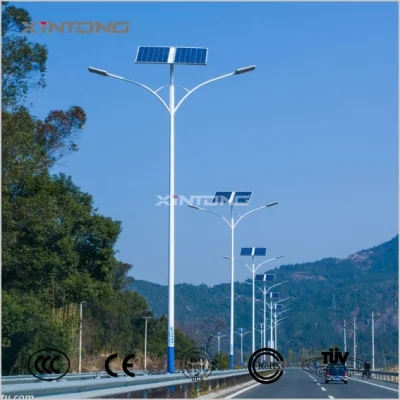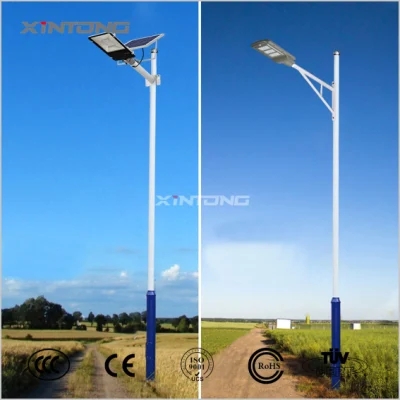Street lights help keep streets safe and prevent accidents for drivers and pedestrians by marking the public roads and sidewalks of many communities. Older street lights use conventional light bulbs while more modern lights use energy-saving Light Emitting Diode (LED) technology. In both cases, street lights need to be durable enough to withstand the elements while continuing to provide light.
Post
One component common to all types of street lights is the post, which rises from a base at the ground and supports the lighting element above. Street light posts contain the electrical wiring that connects the lights directly to the electric grid. Some posts also include a service door for gaining access to a street light's control unit and making repairs or adjustments from ground level.
Street lights posts need to be able to withstand ice, wind and rain. Rust-resistant metals or a protective coat of paint can help preserve the post against the elements, and metal is by far the most common material for its strength and rigidity. Some street light posts, such as those in an historic district, may be decorative, while others are simple grey shafts.
Bulb
Street light bulbs come in a wide range of styles and sizes. Most conventional street lights use halogen bulbs, which are similar in function and appearance to household incandescent bulbs. These bulbs consist of a vacuum tube with a filament inside and an inert gas (such as halogen) that causes the burned portion of the filament to recollect on the filament wire, extending the life of the bulb. Metal halide bulbs employ similar technology but use even less energy and produce more light.
Fluorescent street light bulbs are fluorescent tubes, which contain a gas that reacts to a current to create illumination. Fluorescent street lights tend to use less energy than other bulbs and cast a greenish light, while halogen bulbs cast a warmer, orange light. Finally, light-emitted diodes, or LEDs, are the most efficient type of street light bulb. LEDs are semiconductors that produce a strong illumination and last much longer than bulbs.


Heat Exchangers
LED street lights include heat exchangers to regulate temperature. These devices moderate the heat that an electrical current produces as it powers the LED. Heat exchangers use the passage of air over a series of fins to keep the lighting element cool and to make sure that the LED is able to produce even light without darker areas or "hot spots" that might otherwise occur.
Lens
LED and conventional street lights feature a curved lens that is usually made of heavy-duty glass or, more commonly, plastic. Street light lenses function to magnify the effect of the light inside. They also direct the light downward toward the street for maximum efficiency. Finally, street light lenses protect the delicate lighting elements inside. Fogged, scratched or broken lenses are much easier and cost-effective to replace than entire lighting elements.
Post time: Feb-22-2022